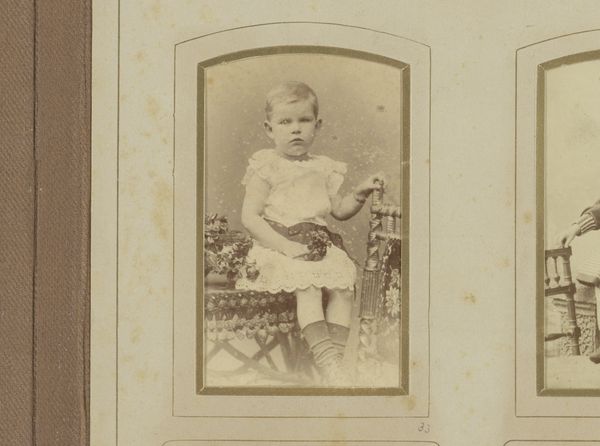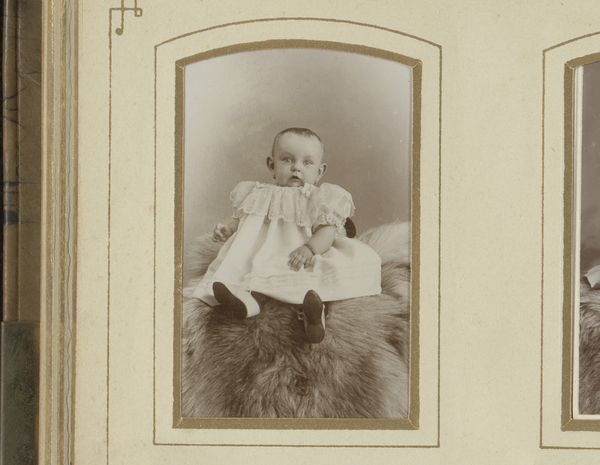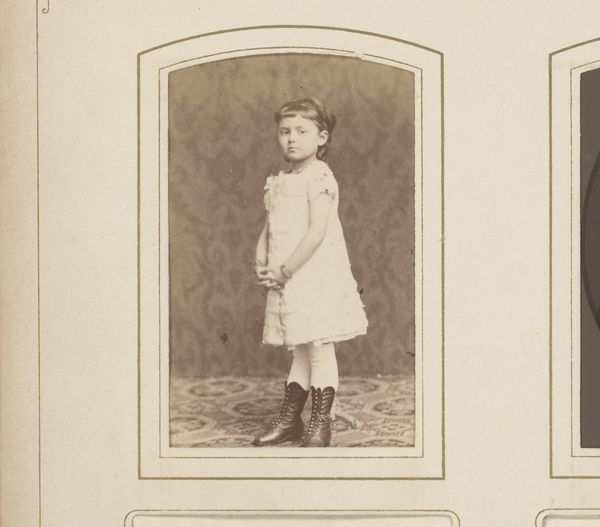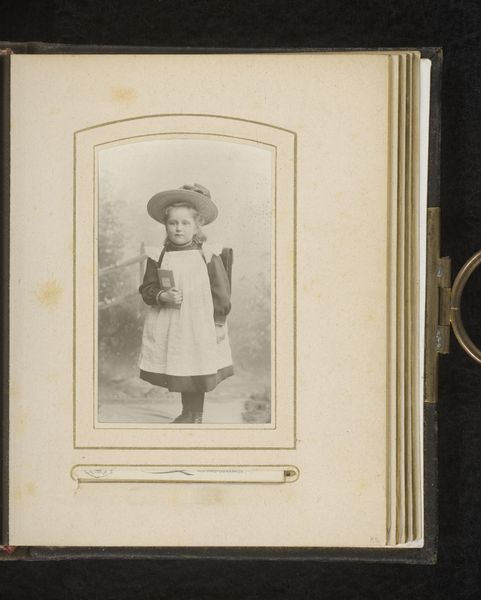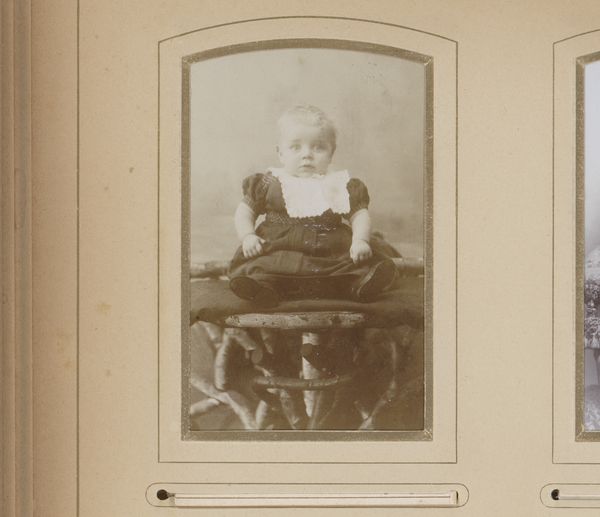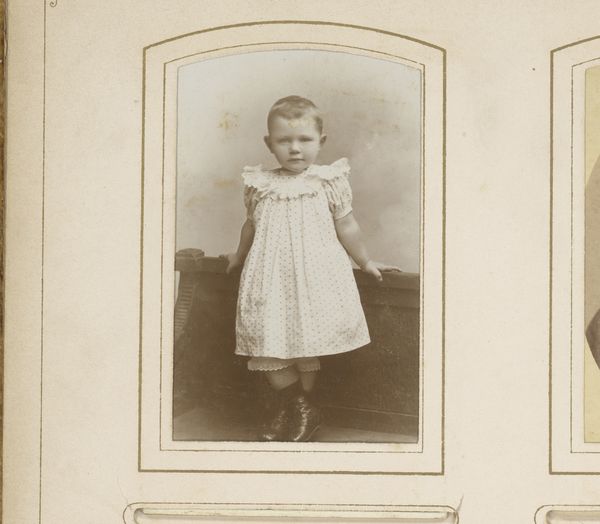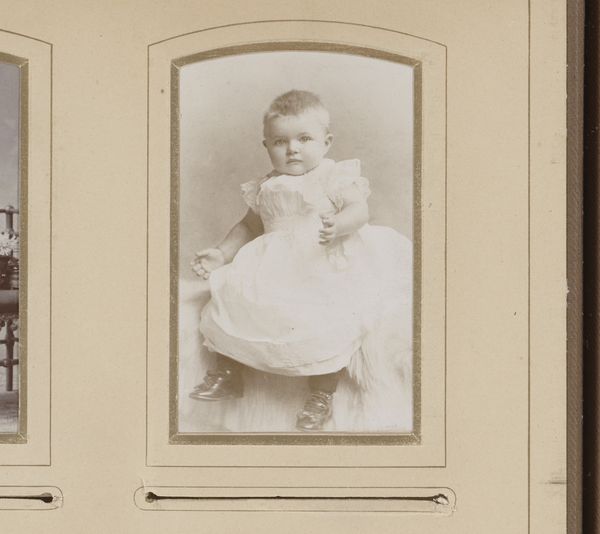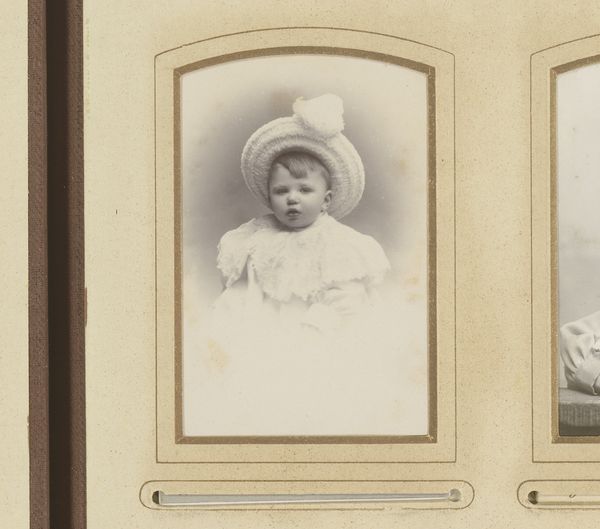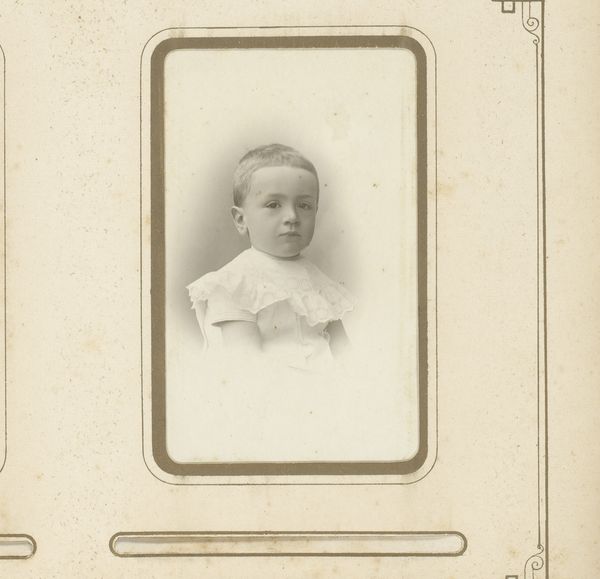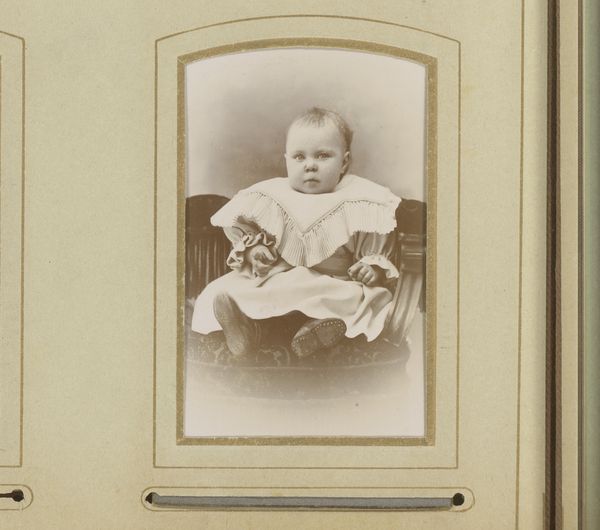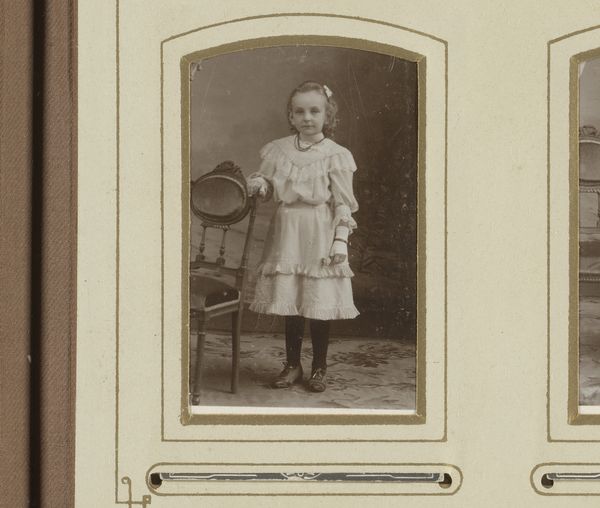
photography
#
portrait
#
photography
#
historical photography
#
19th century
Dimensions: height 83 mm, width 51 mm
Copyright: Rijks Museum: Open Domain
Curator: This is a photographic portrait of a child with a hat, produced sometime between 1880 and 1910 by Chits & Fils. There's something incredibly captivating about this image, isn't there? Editor: It has a melancholic feel. The tones are muted, sepia-like, drawing my eye to the details of the textiles in play. I wonder what chemicals were used and how the light captured such stillness. Curator: Indeed. The portrait style during this time often served as a statement of social identity. Considering this child's clothing – the frilled skirt, white blouse, the somewhat oversized hat – one could suggest the child comes from a family who values appearances and wishes to denote status. It's a posed constructed identity. Editor: I agree, but I'm also thinking about the labor behind such portraits. The growing industry of photographic studios employed numerous technicians and artisans to create these images, developing both the materials and constructing the backdrop, clothing. It all emphasizes the commercial aspect even for private sittings. Curator: A really good point. What looks like an innocent depiction involves a complex web of social and economic interactions, speaking volumes about gendered expectations and consumer culture. This type of staged portrait becomes almost performative for its subject. Editor: The details around the frame suggest this photo could have been included in a family photo album. How would this change or solidify the image’s legacy across generations, knowing this material existence? Curator: Precisely. It also allows us to think about what’s *not* in the frame – the photographer’s choices in staging, in excluding parts of the setting. What did this particular studio offer sitters? Editor: This is so intriguing when we unpack its creation beyond aesthetics. What was originally intended as a keepsake transforms when critically looked at as a nexus of intersecting conditions around labor and selfhood. Curator: I feel looking through the lens of photography history provides such profound ways of observing an image's function and impact in its own time and afterwards. Editor: Absolutely! Focusing on the material makes me ponder what aspects will change in meaning across time. What will future scholars deduce from these now aging chemicals that preserved this child’s identity.
Comments
No comments
Be the first to comment and join the conversation on the ultimate creative platform.
